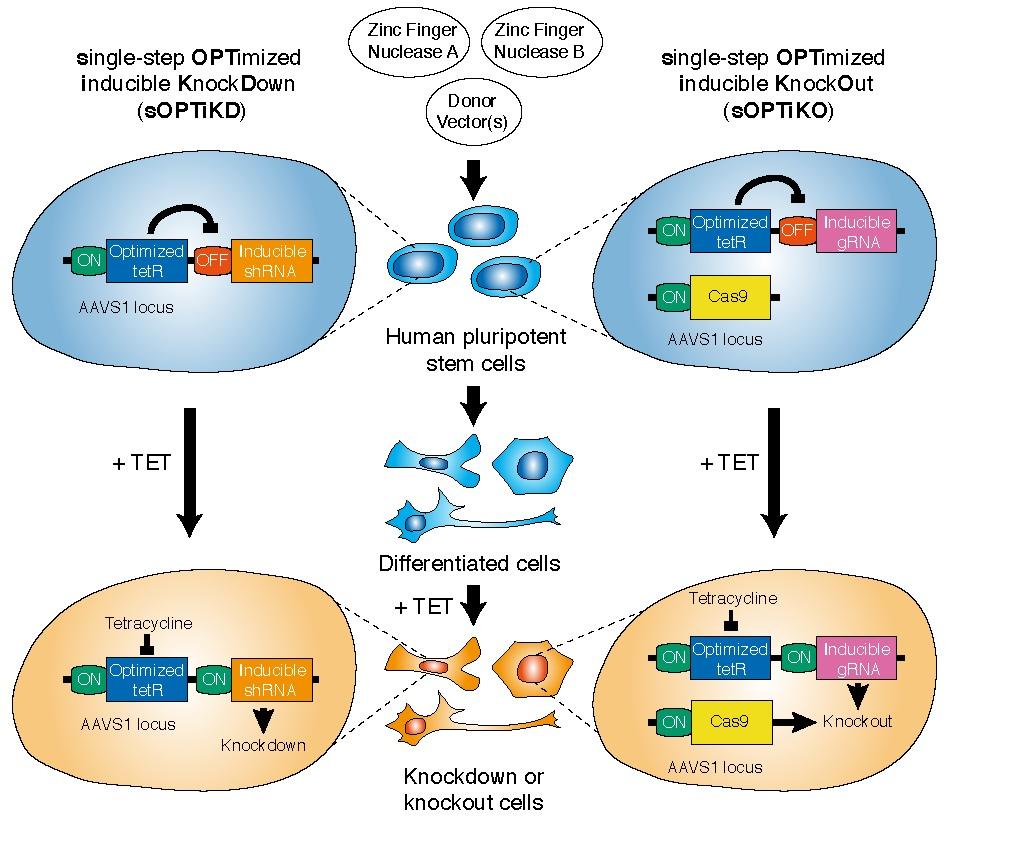
Submitted by Administrator on Fri, 20/01/2017 - 10:46
CSCI researchers from the Vallier lab have created sOPTiKO, a more efficient and enhanced inducible CRISPR genome editing platform. The study, published today in Development, describes how the freely available single-step system works in every cell in the body and at every stage of development. This new approach will aid researchers in developmental biology, tissue regeneration and cancer.
Two complementary methods were developed. sOPiTKO is a knock-out system that turns off genes by disrupting the DNA. sOPTiKD is a knock-down system that silences the action of genes by disrupting the RNA. Using these two methods, scientists can inducibly turn off or silence genes, in any cell type, at any stage of a cell’s development from stem cell to fully differentiated adult cell. These systems will allow researchers world-wide to rapidly and accurately explore the changing role of genes as the cells develop into tissues such as liver, skin or heart, and discover how this contributes to health and disease.
Professor Ludovic Vallier, CSCI and Sanger Institute researcher said: “As a cell develops from being stem cell to being a fully differentiated adult cell the genes within it take on different roles. Before, if we knocked out a gene, we could only see what effect this had at the very first step. By allowing the gene to operate during the cell’s development and then knocking it out with sOPTiKO at a later developmental step, we can investigate exactly what it is doing at that stage.”
The sOPTiKO and sOPTiKD methods allow scientists silence the activity of more than one gene at a time, so researchers are now able to investigate the role of whole families of related genes by knocking down the activity of all of them at once
Dr Alessandro Bertero, one of the first authors of the study from the Cambridge Stem Cell Institute, said: “Two key advantages of using sOPTiKO/sOPTiKD over other CRISPR editing systems are that it is truly inducible and can work in almost any cell type. In the past we have been hampered by the fact we could study a gene’s function only in a specific tissue. Now you can knock out the same gene in parallel in a diversity of cell type with different functions.”
Read more: Sanger Institute

Publication details:
Bertero A et al. (2016) Optimized inducible shRNA and CRISPR/Cas9 platforms for in vitro studies of human development using hPSCs. Development 143: 4405-4418. doi:10.1242/dev.138081

